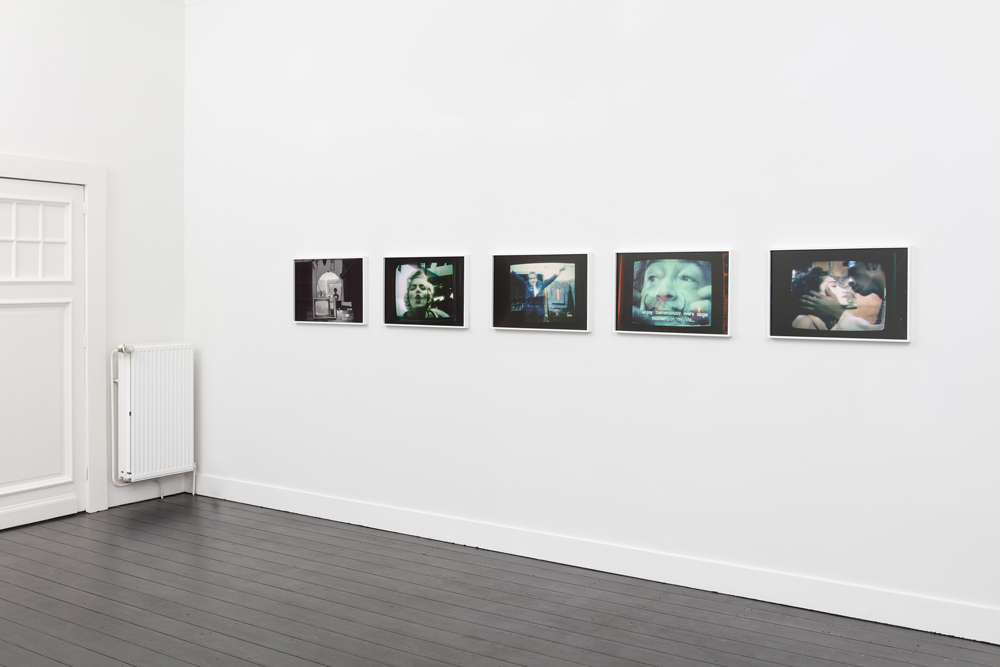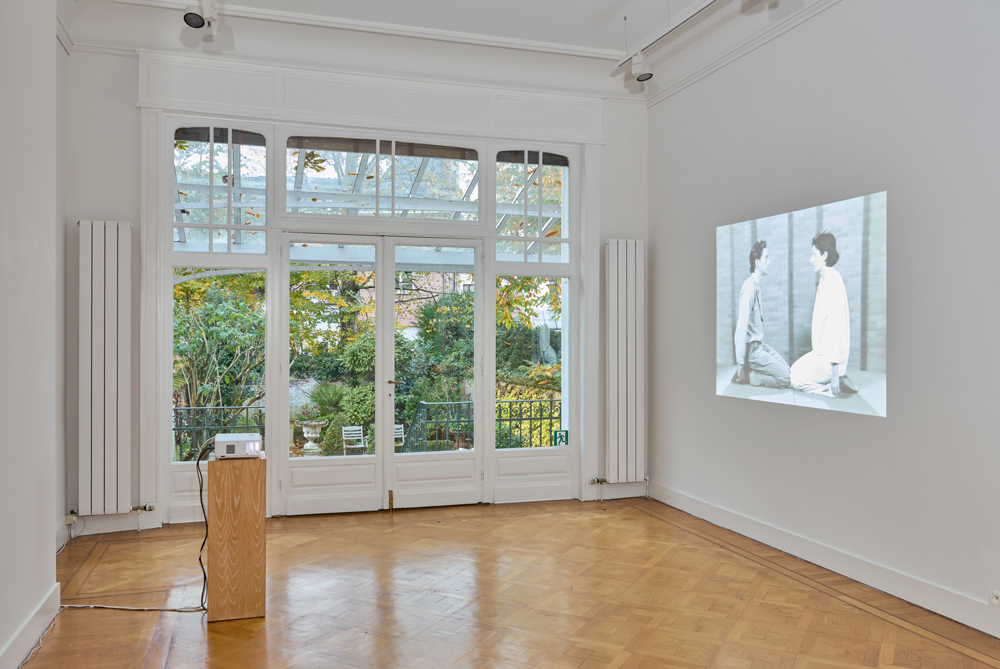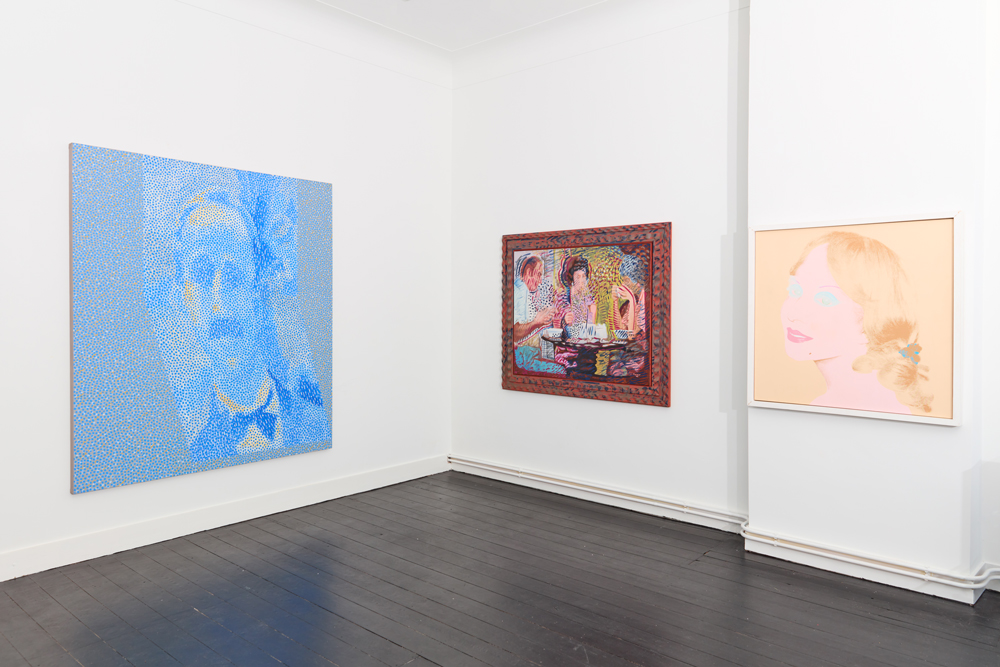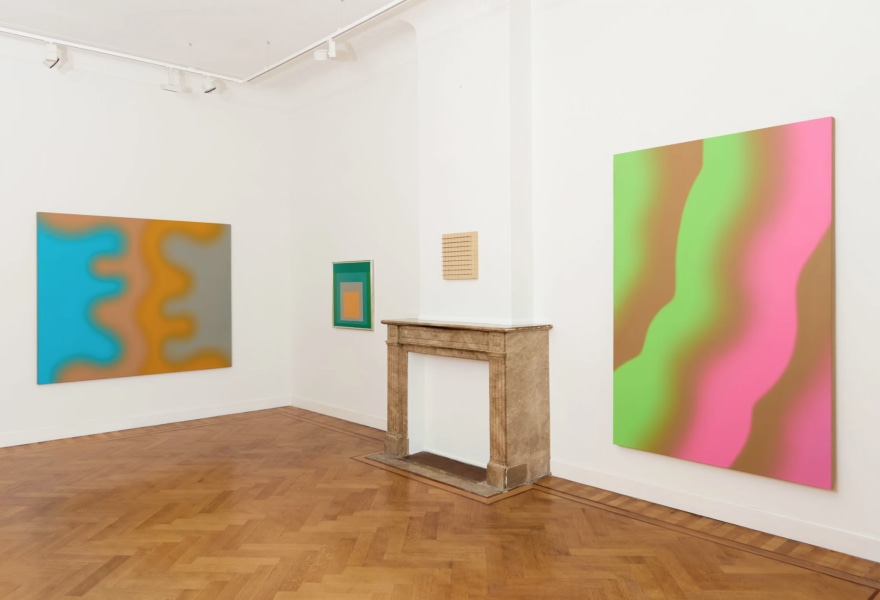18 december 2023, Yves Joris
Space in colour: Fangor's visual symphony
Polish artist Wojciech Fangor lived until the age of 93. Despite spanning multiple decades and art movements, he remains a relatively unknown figure in Belgium. GNYP Gallery aims to remedy this by not only introducing us to his work, but also engaging his art in dialogue with contemporaries such as Nam June Paik, Andy Warhol and Sigmar Polke. This dialogue requires time to be truly heard, allowing us to understand the artist through words and images.
Wojciech Fangor was born in Warsaw in 1922. His artistic education was abruptly interrupted by World War II, leading him to initially wield the brush in the style of socialist realism. From 1953 to 1961, he was assistant professor at the Academy of Fine Arts in Warsaw, where he became a prominent figure in the Polish School of Posters. Despite his success, Fangor decided to shift his creative focus to experiments with space.
The year 1958 marked a milestone in his career with the work A Study of Space. His visual experiments gradually evolved towards abstract illusionistic paintings characterised by diffuse edges of color and form. After brief stays in cities like Vienna, Paris, Bath, London and Berlin, Fangor set foot on American soil in 1966, where he participated in influential exhibitions, including The Responsive Eye at MoMA in 1965, and in 1970, had a solo exhibition at the Guggenheim Museum.
Following his retirement as art professor at Fairleigh Dickinson University in New Jersey, he returned to his homeland of Poland in 1999. In 2014, he designed notable murals for the Warsaw metro. This act became his final creative contribution, enriching the city with his artistic legacy. Wojciech Fangor passed away near Warsaw in 2015, leaving behind an artistic legacy that endures in the rich history of modern art.

Wojciech Fangor and his contemporaries, 1960-1995, GNYP
In dialogue with contemporaries
The exhibition Wojciech Fangor and his Contemporaries, 1960-1995, which engages Fangor's work in dialogue with his peers, showcases his artistic legacy within the changing socio-cultural context. The exhibition is divided into four parts, with Fangor's work engaging in dialogue with itself, contemporaries and the viewer. It's a challenging dialogue, as he continually reinvents himself as an artist, requiring careful listening to his various narratives. Fortunately, seats are provided in the different spaces for a comfortable virtual dialogue.
Abstraction: a study in space
As mentioned earlier, Fangor's interest in space unfolded in 1958 with the groundbreaking work . His pioneering spirit laid the foundation for a substantial body of work often categorised as optical abstraction. Although associated with op-art, a movement seeking to understand vision and perception, Fangor did not consider himself an op-artist.
In the 1960s, a time when European artists sought to reinvent painting, Fangor travelled between West Germany, Great Britain and France. He encountered artists like Günther Uecker, a leading figure in the German Zero movement, who used nails as 'paint' for his monochrome paintings. Despite challenging experiments, Fangor's focus on his study of space remained steadfast. While Uecker expanded pictorial space with nails, Fangor continued to explore the allure of space on the painting's surface, fascinating and challenging the viewer.

Wojciech Fangor and his contemporaries, 1960-1995, GNYP
Interfaces: connections between reason and emotion
In 1973, Fangor entered a new phase in his artistic journey through collaboration with the renowned Martha Graham American ballet company. The sets he designed for the ballet Mendicants of Evening reflected his growing interest in the complex psychological and formal relationships between people. In the Interfaces series, Fangor introduced figurative elements to "combine rational blocks with emotional demons," using space as both a connector and separator. Drawing inspiration from dancers and their movements, he translated them into pictorial space, incorporating the frame into this expression.
The 1970s marked the discovery of the human body as an artistic medium, leading to the proliferation of performance art. This era also introduced artists like Ulay and Marina Abramovic, pioneers of performance art who explored emotional and physical interaction between bodies in real physical space. Their performance videos, along with Fangor's Interfaces, reflect the spirit of the time, where artists began exploring the boundaries between rationality and emotion, embracing the complexity of human relationships.

Wojciech Fangor and his contemporaries, 1960-1995, GNYP
Television paintings: the influence of mass media
In the late 1970s, Fangor's fascination with television manifested in a unique series of paintings. His analysis of television's overwhelming influence on culture and society demonstrated a deep understanding of the simultaneous realities offered by the medium. Similar to artists like Andy Warhol, who explored American consumerism, and Nam June Paik, who depicted the close relationship between television and the human body in his sculptures, Fangor embraced the idea and object of television as central themes in his work.
Barkley Hendriks, another artist from that time, documented the changing popular visual culture, news and process of public figures through television screens. Fangor's Television Paintings not only reflect his personal fascination with the medium, but also his critical perspective on its impact on society and the aesthetics of that time.

Wojciech Fangor, Wojciech Fangor Television Paintings 1977-1984, GNYP
The chair: an intriguing subject
The chair seems to have been a constant companion in Fangor's artistic journey. Studio photos reveal that the chair always occupies a prominent place next to his work, almost as a surrogate for the absent artist himself. In the 1980s and 1990s, Fangor painted several chair portraits, placing himself in a tradition of artists like Vincent van Gogh and David Hockney, who were also fascinated by the simple shape of this piece of furniture. The chair provided Fangor with opportunities to experiment with the pictorial plane, perspective and reflections on perception, art history and social conventions.
No words for art
The exhibition Wojciech Fangor and his Contemporaries, 1960-1995 brings together works from Abstract, Interfaces, Television Paintings and the Chair series. While these blocks only highlight part of Fangor's extensive body of work, they provide an engaging context in which to understand his art within the broader changes in Western art history.
Fangor's focus on space, interfaces, television and the chair offers an extraordinary perspective that continues to resonate in the contemporary art world. Placing his work within the context of his contemporaries not only reflects Fangor's rich legacy, but also invites broader reflection on the evolution of Western art history.
To better understand Fangor's oeuvre, it might be relevant to pause and consider the words of Georgia O'Keeffe: "I found I could say things with color and shapes that I couldn't say any other way – things I had no words for." Perhaps Fangor indeed found no words to describe his art or the 'wordlessness' of his art allowed him to speak through his canvas in times when people had to be cautious with their words under the prevailing regime.
Fangor's art, focused on space, interfaces, television and the chair, undoubtedly provides an extraordinary perspective that continues to resonate in the contemporary art world. By situating his work within the context of his contemporaries, this exhibition not only highlights Fangor's rich legacy, but also prompts a broader reflection on the evolution of Western art history.

Wojciech Fangor and his contemporaries, 1960-1995, GNYP
